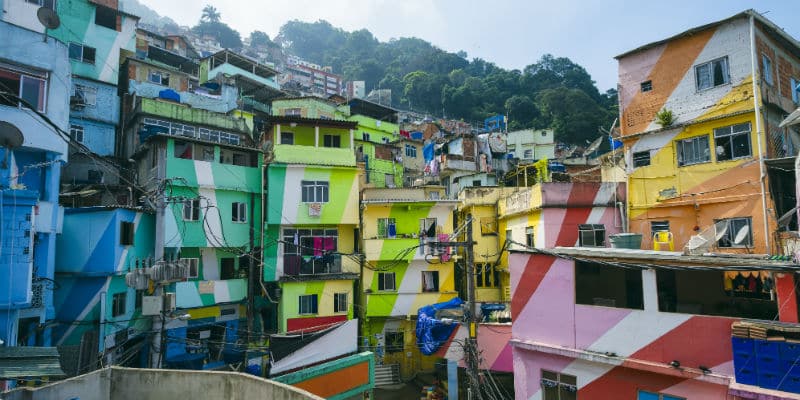This piece was co-authored by Christimara Garcia, a volunteer at the Christensen Institute and founder of Catalyze Innovations Initiative, a Brazilian market-creating innovation action tank.
In the late 1950’s, Carolina Maria de Jesus, one of the first and most important Black writers in Brazil, defined the Brazilian favelas as “trash rooms.” Living in a favela in Canindé, São Paulo, she worked as a waste picker, and wrote about the daily life of her community in old notebooks she dug up from the trash. More than 70 years later, conditions haven’t improved much for the 13.6 million people living in Brazilian favelas. Many still lack quality housing and access to sanitation, and they’re also excluded by many of the large, fast-moving consumer goods companies. As a result, millions of people who live in favelas—most of whom are Afro-descendants, from indigenous communities, “quilombolas,” or migrants—struggle to access many products and services that could improve their lives.
Kurandé Natural Cosmetics, a Brazilian cosmetic company, is trying to change that—at least as it relates to personal care and cosmetics, which are inaccessible to many. Founded by Felipe Garcia and Cláudio Marques, Kurandé’s focus on people who’ve traditionally been excluded from the cosmetics industry has the markings of a classic market-creating innovation. Market-creating innovations transform complicated and expensive products into ones that are simple and affordable so they become accessible to a whole new population of people. We call these people nonconsumers.
With an initial focus on the more than 180,000 people living at Alemão slum in Rio de Janeiro, Kurandé’s approach to market creation has paid off as the organization has tripled its revenues and sustained growth even during the pandemic of COVID-19. As a result, it continues to expand and now serves six additional Brazilian favelas.
But like other market-creating organizations, Kurandé’s path hasn’t been easy. As noted in the report, Making your own luck in emerging economies: Six innovative strategies for creating new markets, market-creating organizations are often confronted with three broad challenges. Below, we share how Kurandé is overcoming them by utilizing common strategies employed by other market-creating organizations.
1. Challenge: Designing a product customers will embrace
Developing solutions for nonconsumers can be challenging especially since they’re accustomed to going without many products and services. To design products that nonconsumers will embrace, market-creating organizations need to address the barriers that have prevented consumption in the past, including money, access, time, and skill. Among the 100 market-creating organizations studied in the report, all needed to overcome at least one of these barriers, while 95% needed to overcome multiple barriers at once. As in all aspects of the market-creation process, circumstances matter.
The first barrier of consumption that Kurandé removed was money. Instead of going the more expensive route that many Brazilian cosmetics companies take by importing the raw materials they use for their cosmetics, Kurandé leverages local plants and herbs. In doing so, Kurandé is able to reduce costs because it’s not absorbing the cost of production, transport, and import from other countries.
2. Challenge: Creating a new market from scratch
The next challenge after addressing the barriers that inhibit consumption is creating a new market. To that end, 100% of the organizations in the aforementioned study had to redefine their business activities and cost structure in order to reach new consumers, while still ensuring a path to profitability.
Kurandé’ has developed a new value network for production and distribution within the favelas. Doing so has made it possible for the company to sell its cosmetics sets for roughly half the price of typical products in the market, while maintaining good margins. In addition, rather than import costly raw materials, Kurandé’s founders have based their products’ formulas on their mother and great-grandmother’s old recipes, customizing the products for the particularities of black and brown skins. These recipes use less expensive, local goods.
According to Kurandé co-founder Claudio Marques, “Some brands of natural cosmetics use essential oil from an herb that you only find out there, in a super cold, distant region. This increases the cost of production and the final price. So, what we do is focus on sustainability that is real: why should I use essential oil from an expensive herb if I can have the same effect with a Brazilian herb by harnessing our ancestors’ knowledge?”
3. Challenge: Managing a difficult business environment
Particularly when innovating in emerging economies, it’s often not enough to develop excellent business strategies and structures. The business environment in many emerging economies where there is significant potential for market-creating innovations is often unpredictable, and government bureaucracy might be slow and steeped in overt corruption. How should market-creating organizations that choose to operate in these markets think about these obstacles?
Having developed a product in a sector that is highly regulated and dominated by multinationals, Kurandé overcame some of these obstacles by being proactive and deliberate in how it managed its relationship with the regulatory agencies. In order to reduce the time to obtain a production license (which takes an average of two years in Brazil), the innovative company adjusted its initial strategy, opting to develop its manufacturing plant with a third partner. Doing so, it was able to get its operational license in six months and reduce initial production costs.
Kurandé is still a young company, but it has an ambitious mission to not only make its products available to those who live in the favelas, but also to celebrate the cultures of black and indigenous peoples. Under the slogan “From Alemão slum to the world!” it’s doing just that.
For more, see:
New research reveals the #1 innovation strategy employed by 100 market-creating organizations


